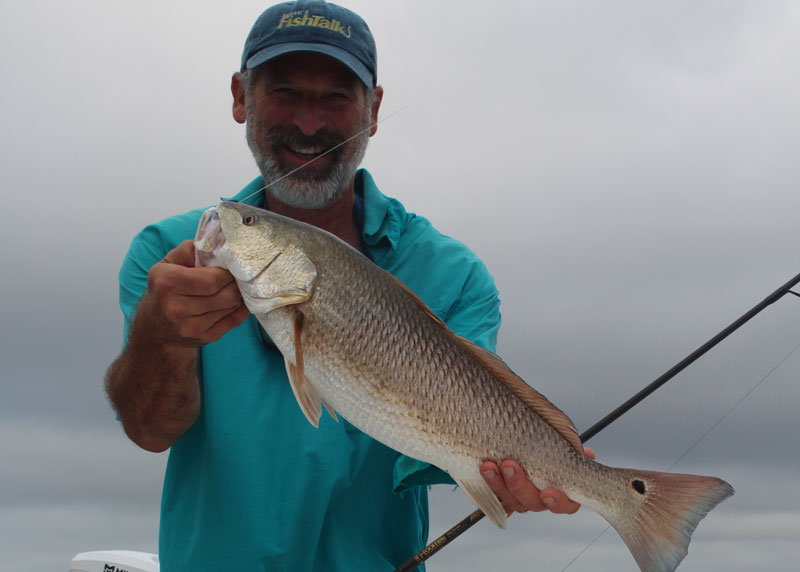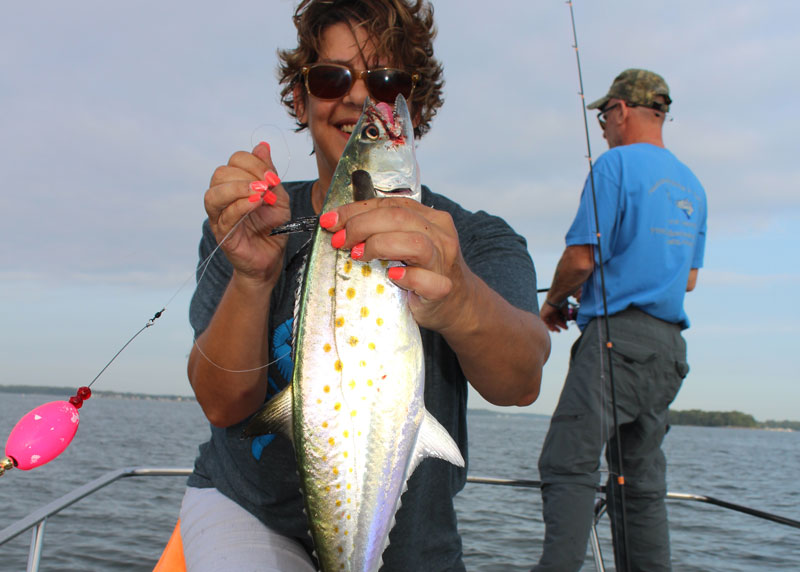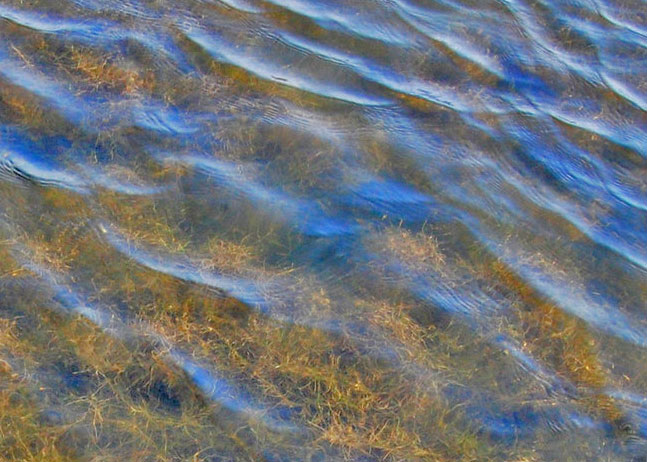You want to know how to catch more red drum? In Florida and all along the Gulf Coast a shrimp or finger mullet fished a few feet under a popping cork is a killer. Shocker alert: The same technique works in Chesapeake waters like the Tangier Sound, too. But some Mid-Atlantic anglers have never even been exposed to popping corks, much less seen one in use north of the Virginia line. Don’t worry – armed with these three tips, you’ll be popping your way to more red drum in no time.

Get the Right Corks – You’re not likely to see popping corks in many tackle shops around here, which means ordering them off the internet. But all popping corks are not created equally. Make sure you get a cork that has a through-wire with sliding plastic beads rigged on the wire, above and below the cork – these absolutely do make a difference. Much like the rattles in swimming plugs, the “clack” these beads make when they slide down the wire and hit the cork definitely attracts fish. Every time you pop the cork by yanking it on its side, those beads slide around and create those fish-attracting noises. Regular old bobber type corks can’t hold a candle to these clickers and clackers.

Always Pause and Wait Between Pops - Two or three pops in a row is okay, but don’t try to fish a popping cork like topwater when reds are the target – a five to 10 second pause is in order after the popping. On the other hand, most of your red drum hits will come just a second or two after making the pop, so letting it sit for more than 10 seconds is usually a waste of time. And remember: the moment the cork goes under, set the hook. It you want to catch more red drum you need to remember that they’ll often reject a bait a second or two after feeling the resistance of the cork, as they pull it underwater. Note: this is the opposite of the popping technique used to trigger strikes from Spanish mackerel and bluefish, when a steady popping/moving retrieve is in order.

Utilize Popping Corks in Relatively Shallow Water - These rigs will usually perform best in just three to eight foot depths. This may have something to do with its noise-making, fish-attracting properties, but surely is also has a lot to do with where you’ll commonly locate the best numbers of red drum. Weedbeds, drop-offs, and ledges in the two to eight foot range are often excellent spots. Added bonus: one of the best things about popping corks is that they let you fish over weedbeds while minimizing weeded-up hooks.

Wondering how the bite is for redfish in the Tangier right about now? Check out the FishTalk Mag Fishing Reports to get the latest news.
Redfish have been on the upswing in Chesapeake Waters from VIrginia clear up past the Bay Bridge. If you want to go get 'em, also be sure to check out:
- How to Catch Slot Redfish for Beginners
- How to Catch Chesapeake Redfish in Cold Weather
- Spring Virginia Bull Redfish
- Late Summer Redfish
- Jigging for Fall Redfish
Editor's note: This article was originally published in June of 2018 and was last updated in May of 2025.